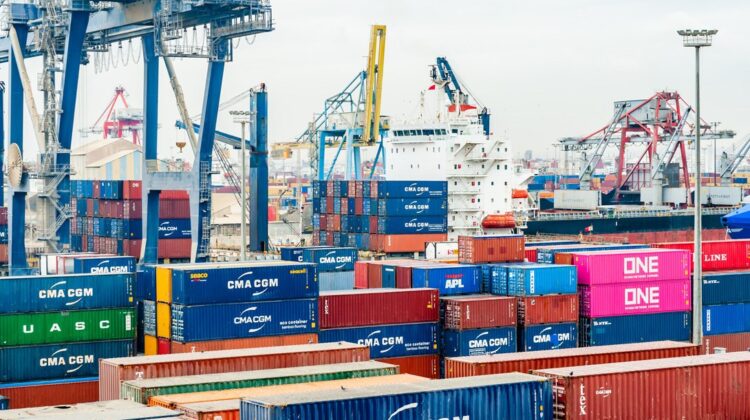
The container shortage crisis
The recent Budget has proposed subsidy support to vessels that register in India.More than 85 percent of the world’s total container production happens in China.
Exports are the lifeline of an economy. It fuels GDP growth, earns foreign exchange, makes goods competitive and generates employment. India has an ambitious export target of $1 trillion by 2025. It has been suggested that to achieve this India must aim to have 5 percent share in world merchandise exports and 7 percent in services exports by 2025 -up from about the present 1.7 percent share which it has in merchandise exports and about 3.5 percent in services. This was always a tough task. Then came the pandemic.
The pandemic hurt all parts of the Indian economy- arguably, none more so than exports. Merchandise exports in the period April 2020 to January 2021 have fallen by 13.58 percent; service exports, which is India’s strength has fallen by 6.29 percent. The overall export figures for the same period at $390.60 billion have fallen by 10.63 percent. And another collateral crisis of the pandemic, which with the wisdom of hindsight seemed obvious, is the serious shortage of shipping containers which has steadily been growing since mid-last year.
If exports are the lifeline of an economy, shipping containers are the lifeline of exports. From a ‘modest beginning in 1956 when a refitted vessel carried 58 containers from Newark to Houston, container shipping has reshaped manufacturing, destroyed old ports, devastated waterfront communities created new ports, reduced costs of transportation and changed the economics of shipping.’ Today it is estimated that there are more than 17 million containers (20 foot and 40-foot containers are the standard industry norms ) circulating globally and more than 5300 vessels handling exclusively container cargo. More than 85 percent of global trade happens in containers.
Containers thus are necessary for trade. And it is essential that containers move from one port to another; this is determined, like all things, by demand which again gets triggered by requirement-or in other words by the quantum of imports and exports. Thus, a balance, where import containers are destuffed and available for exports is necessary.
The pandemic resulting in shutting down of manufacture, loss of jobs and economies stuttering, meant a steep reduction in trade-both imports and exports. The fall in imports after the pandemic led to a huge imbalance in the demand and supply of containers, hitting the availability of containers for exports. In effect, containers remained stationary wherever they were-circulation of containers not happening because of the fall in trade. This has impacted exports and worse, sharply increased costs by almost 3 times as compared to the pre-COVID rates.
While this is a global phenomenon impacting economies across the globe, it has impacted India more simply because the Indian economy has rebounded on the path to recovery faster. More than 90 percent of India’s trade by volume and 75 percent by value of India’s trade moves by sea; a large percentage by containers. Containerised imports have seen a sharp decline since July-August 2021. Scheduled vessels have been cancelled because of the shortage of container freight.
Normally, the import containers are used for exports. According to the industry, after the lockdown was lifted there had been a surge in industrial activity as the exporters rushed to meet export obligations. There was a demand for containers. Reports suggest the container shortage has impacted exports of basmati, non-basmati, hand tools, sports goods, leather goods and textiles. It has impacted exports of sugar—total shipments of sugar in January 2021 being 3,29,185 MT as against 8,02,408 MT in the same month last year.
Freight rates have doubled-and even if the exporter is willing to pay the higher rate, containers are not available. Boxes are being made available after a wait of up to 3-4 weeks. A typical Mumbai-Dubai -Mumbai container vessel voyage used to take a month, ensuring a steady availability of containers; now it takes more than 3 months. There are reports suggesting a large pile-up of containers in transshipment ports like Dubai.
The Federation of India Exporters Organization (FIEO) has flagged the issue in the last Board of Trade meeting held in December 2020. The Government has stepped in and directed shipping lines to get back empties. The problem in the ports on the western coast has been reduced; the eastern cost continues to have a problem. The freight rate from Chennai to Hamburg has for a 20-footer risen to $ 1800 from $ 500; to Felixstowe to $ 1800 from $ 400; to New York to $ 4800 from $ 2200.
Railways have permitted free movement of empties from ports to ICD’s and vice versa. The ports should also reduce port handling charges for empties; these are costs that ultimately is paid by the exporter. The ports and the customs authorities have taken stock of long-pending uncleared containers and taken steps to destuff them.
As a long-term strategy, India needs to manufacture containers. Typically, this is a segment dominated by the Chinese-more than 85 per cent of the world’s total container production happens there. The Ministry of Ports, Shipping and Waterways has initiated the first steps. A feasibility study for making containers in Bhavnagar has been commissioned. The recent Budget has proposed subsidy support to vessels that register in India. These are long term measures.
January 2021 has witnessed a growth of non-oil exports. Drugs & pharmaceuticals by 16.4 percent, engineering goods by 18.8 percent, organic & inorganic chemicals by 2.6 percent and electronic goods by 16 percent as compared to January 2020. This augurs well. While the problem relating to container shortage should ease by mid-2021 with the balancing of trade, the larger issue of support to exporters needs to be addressed. More so since the Merchandise Exports from India Scheme (MEIS) has been terminated and the Remission of Duties & other Taxes on Exported Products (RoDTEP) rates yet to be announced.
Source:CNBC TV18

